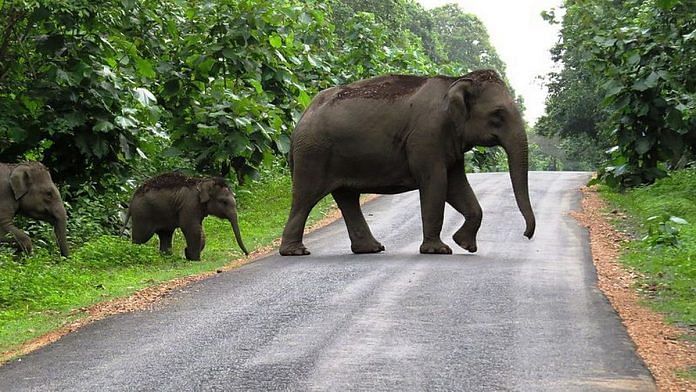New York: There are four critical facets of pandemic prevention, according to Lee Hannah, senior scientist at Conservation International. Three of them make immediate sense against the backdrop of our current emergency: stockpile masks and respirators; have testing infrastructure ready; and ban the global wildlife trade, including the open animal markets where Covid-19 may have first infected people.
His fourth recommendation is both the most grandiose and the least sensible to talk about in the midst of a once-in-a-century crisis: “Take care of nature.”
The assault on ecosystems that allowed Covid-19 to jump from animals to humans went far beyond merchants hunting and selling rare wildlife. Biodiversity—that is, the health of the entire ecosystem—can restrain pathogens before they ever leave the wild. “We need to tell people right now that there is a series of things we need to do once we’re out of this mess to make sure it never happens again,” Hannah says.
The role of biodiversity in disease prevention has received increased attention of late. In a 2015 “state of knowledge review” of biodiversity and human health by the United Nations, scientists wrote that “an ecological approach to disease, rather than a simplistic ‘one germ, one disease’ approach, will provide a richer understanding of disease-related outcomes.” Recent research has given more support to the idea that biodiversity protection in one part of the world can prevent novel diseases from emerging and leaping into another.
It’s a numbers game, in part. Not all species in a community are equally susceptible to a given disease, nor are they all equally efficient transmitters. In diverse ecosystems well separated from human habitations, viruses ebb and flow without ever having a chance to make it to the big time.
But as people move in, those protections begin to break down. Disrupted ecosystems tend to lose their biggest predators first, and what they leave behind are smaller critters that live fast, reproduce in large numbers, and have immune systems more capable of carrying disease without succumbing to it. When there are only a few species left, they’re good at carrying disease, and they thrive near people, there may be nothing between a deadly pathogen and all of humanity.
“Virus spillover risk” from wildlife to people rises as contact increases between them, according to research published Tuesday by a team of researchers led by Christine Kreuder Johnson of the One Health Institute at University of California, Davis. Almost half of the new diseases that jumped from animals to humans (called zoonotic pathogens) after 1940 can be traced to changes in land use, agriculture, or wildlife hunting. SARS, Ebola, West Nile, Lyme, MERS, and others all fit the profile. There may be 10,000 mammalian viruses potentially dangerous to people.
“We are messing with natural systems in certain ways that can make them much more dangerous than they would otherwise be,” says Richard Ostfeld, a disease ecologist at the Cary Institute of Ecosystem Studies. “And biodiversity loss is one of those. Climate change is another.”
A longer-term strategy can help nations see the benefits of rethinking resource use. “The revenue from clearing new forest is extremely high—briefly,” says William Karesh, executive vice president at EcoHealth Alliance, a research nonprofit. “But the cost to the public-health system also goes up because you get very common diseases like malaria.” And as we’re now seeing, new zoonotic pathogens can be even more expensive to deal with.
Also read: Animals have come home. Covid-19 lockdown gives control back into nature’s hands
Despite years of creative and resource-intensive work by governments and nonprofits, companies’ actions to mitigate habitat loss aren’t adding up. Many large companies have pledged to halt deforestation, the largest driver of biodiversity loss, through initiatives like the Consumer Goods Forum, the Banking Environment Initiative and their Soft Commodities Compact. “All have missed the mark,” according to a new report by the Rainforest Action Network.
Hannah, of Conservation International, is working to make sure that the reasons to promote biodiversity, including its pathogen-dulling potential, align with the other endangered elephant in the room: climate change.
In February, Hannah and colleagues announced findings on what the effects of achieving climate and conservation targets might be. Using data on 290,000 species, they were able to squint into the future and see where ecosystems might be saved from mass extinction if nations preserve 30% of natural habitats and meet UN limits for global warming. All told, meeting the goals would cut biodiversity losses in half.
The international community is positioned to make some progress. The Convention on Biological Diversity is a 196-nation effort to protect the richness of living things, tap natural resources sustainably, and share the benefits of the environment’s naturally occurring genetic innovations. (The U.S. and the Vatican are non-members.) The next phase of the biodiversity treaty, currently in draft form, proposes that at least 30% of land and ocean be conserved, up from 17% in the previous round. If governments agree to that goal, then nations and conservation scientists must take on the complicated step of figuring out which 30% is most important to protect and how to do it.
The way those areas are drawn today rarely reflects the scientific ideal of how to guard biodiversity. Looking at the existing protected lands, a paper in Nature last month found that 90% of conservation space fails to give bird, amphibian and mammal species the full range of environmental conditions across their existing habitats.
“We could be doing a much better job of getting things in the right places,” says Hannah. “There’s going to be right places for disease control and they may largely overlap the right places for biodiversity.”-Bloomberg
Also read: Vaccine candidates from engineered viruses and ancient tobacco plants — latest on Covid-19



